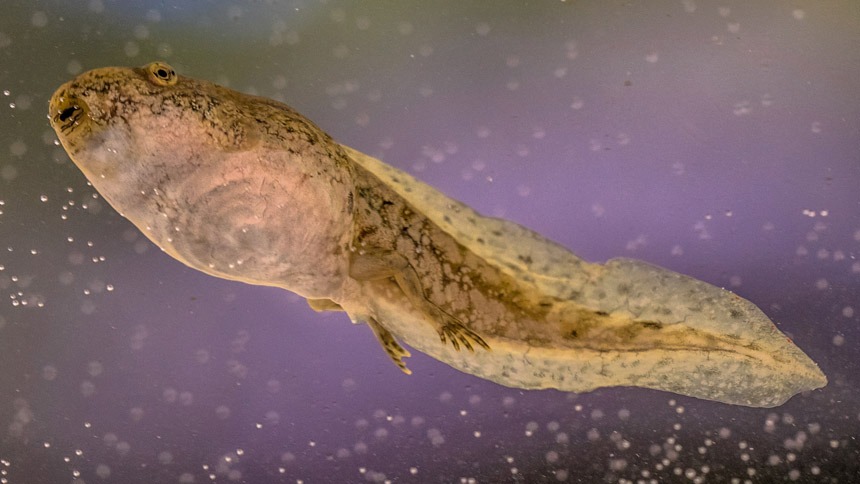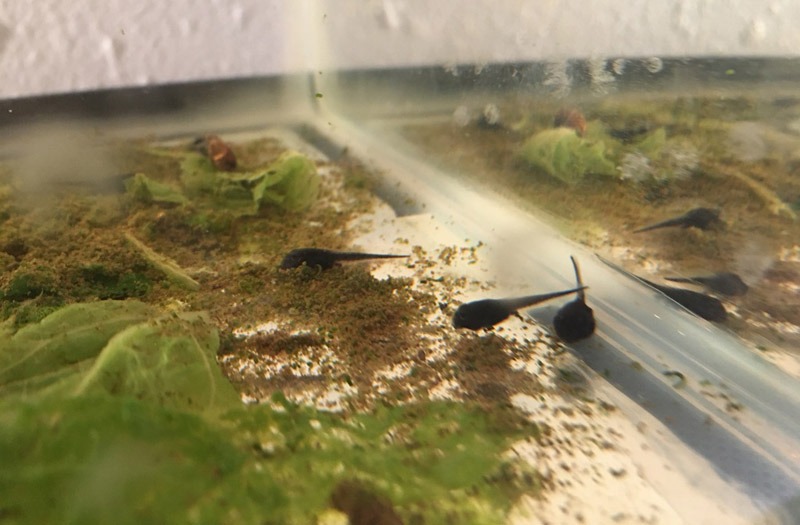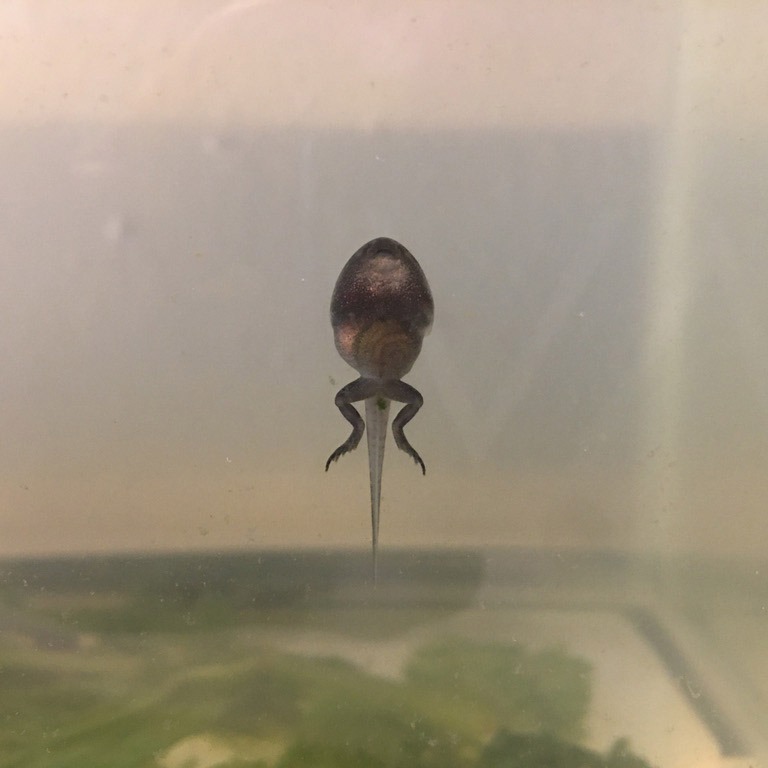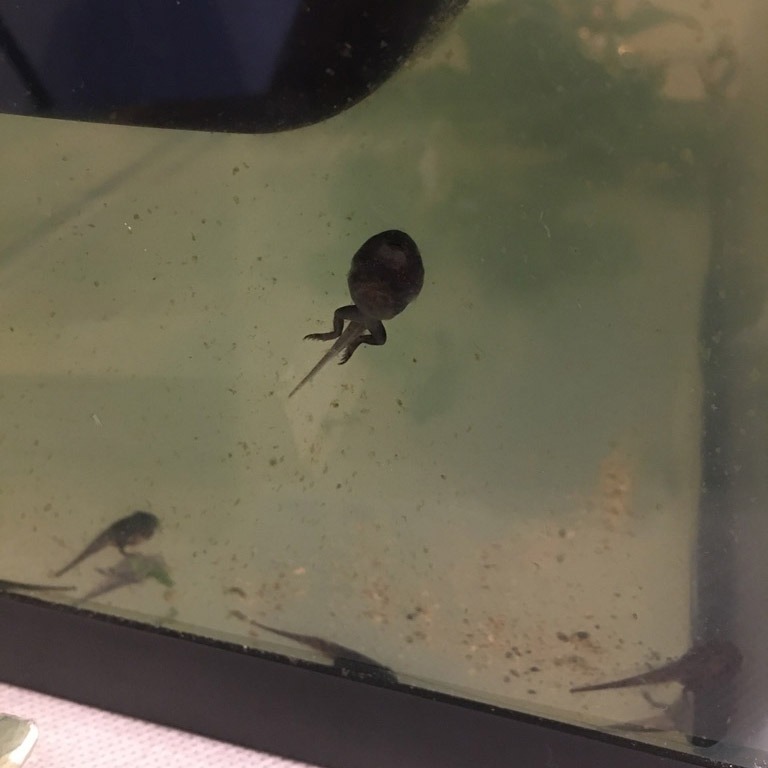
Safe Water Guide for Tadpoles
Raising tadpoles from eggs to froglets is a fun and rewarding adventure, especially for kids and those in the hobby. It’s fun watching tadpoles metamorphose into frogs. From water-dwelling to land-hopping creatures in a few months.
It’s not as easy as it looks, however. Tadpoles require safe water. You see, their permeable skin allows for liquids and gases to pass through. As adult frogs, this is how they’re capable of staying submerged in water for such long periods of time. Respiratory gasses diffuse between their blood vessels and travel through channel proteins called “aquaporins”. And, similar to fish, tadpoles have gills.
What does it all mean? In short, it means whatever is in the water is at risk of absorbing into your tadpoles. Including chemicals like chlorine and chloramines used to treat municipal tap water.
That doesn’t mean you can’t use tap water; you just have to treat it first. I’ll show you how in the following paragraphs. I’ll also cover other sources of water and explain why you should or should not use them.
Safe Water Sources for Tadpoles
- Dechlorinated Tap Water *see instructions below
- Most Well Water *read more
- Bottled Water
- Rain Water
Dangerous Water Sources for Tadpoles
- Tap Water
- Distilled Water
Okay, let me briefly tell you my background so you’ll know where my knowledge comes from. I worked in the water utility department for the local government and currently hold a class “d” water certificate. This allows me to work at water treatment plants. I’m no longer in that profession but that’s beside the point. In addition to this, I’ve learned quite a bit about amphibians and have experience in keeping them (including raising tadpoles). I’m not a biologist and don’t consider myself an expert. Do with this information what you will. I encourage you to find other credible sources!
Page Contents
Tap Water
Tap water often contains chlorine or chloramines. It’s what kills harmful pathogens, making it safer for you and me to drink. For amphibians, unfortunately, it’s rather harmful.
This is why putting tadpoles into a tank filled with straight tap water is a bad option. I’ll explain a little about water treatment in the section below. Feel free to skip that section, it’s related but slightly off the topic of safe water for tadpoles.
About Water Treatment
In my time working for the local government, I learned a lot about water treatment. Raw water is typically pumped from a nearby lake or reservoir into a water treatment facility. Once there, the raw water undergoes filtration and chemical treatment. Not all treatment plants are the same and some use different methods.
Raw water is sent through a filtration system and often includes coagulation-flocculation, in which compounds are added to the water. This process causes organic material to clump together and sink to the bottom of the basin. From there, the water goes through other processes, and eventually, chemicals like chlorine or chloramines are added to water to kill pathogens.
In between the water treatment plant and your house, the chlorine continues to kill additional pathogens that may/may not get into the water supply. States have different limits on the acceptable level of chlorine, too. There is a minimum and maximum. In fact, most cities have a water quality team that frequently goes out and tests the water. Sometimes they can be seen flushing water through a fire hydrant in order to pull better, more chlorinated water through the system.
So, we know there is a good chance that your tap water contains chlorine and that it’s harmful to your tadpole. Does that mean you can’t use it? No, it just means you have to dechlorinate the water.
How to make tap water safe for tadpoles
There are two methods I use to dechlorinate tap water. One way is free but takes more time while the other method costs a few dollars but is quick and easy. Read the following to learn more.
- Aeration – Aerating water involves bringing oxygen in contact with the water molecules. Simply put, air helps to remove chlorine from water. In fact, you can fill an open container with water and let it sit for 48 hours and most of the chlorine will be gone. Adding an air pump or air stone, like those used in fish tanks, will accelerate the process. Using a stick to swirl the water around sends air through the water which accelerates the process of removing chlorine. You get the idea. Let the water sit in an open container for two days. Most of the chlorine will be gone and the water is now suitable for your tadpoles.
- Dechlorination Agent – The fastest way to make your tap water safe for tadpoles is by using a dechlorination agent. Following the instructions on the bottle, simply add the required amount of dechlorination agent into the water. This dechlorinated the water and makes it safe for your tadpoles. This is my preferred method because it’s quick, easy, and cheap. I use ReptiSafe (click the link to buy online) and it works great. It’s cheap and lasts a long time. There are other brands, specifically those for fish tanks, and you can find them in pet stores and big box stores.
Now that you know how to treat your tap water to make it suitable for you tadpole, let’s look at some other sources of water.
Well Water
Using water from a well is typically considered safe. The water pumped up through most wells has been filtered naturally by the earth. It contains natural minerals and is an all-around good source.
There are cases in which people choose to use shock chlorination to treat their well water. In this case, you’ll want to use one of the two methods of removing the chlorine from the well water before using it for your tadpoles.
If you have well water, you probably know whether or not its being treated. If you’re a younger reader and don’t know, ask your parents!
Bottled Water
A decent source of water for amphibians is bottled water (*not distilled). The companies processing the water generally use treatment methods like anion exchange water softening and activated carbon filtering. Each company is different.
Please note, some water bottling companies use clever imagery to trick consumers into thinking their water is completely natural and untreated. In reality, at some point between the retrieval of the water and the bottling plant, there was probably chlorine in the water. Activated carbon filters serve to remove the chlorine but the water is less than perfect.
Regardless, I still consider most bottled water a safe source of water for tadpoles. The world isn’t perfect and we’re all doing the best we can to keep our pets healthy. I realize we can’t always get “the perfect water”. After all, a stream supporting thousands of healthy tadpoles is likely downstream from a wastewater treatment plant or has chemical runoff from nearby farmland where crops are treated.
Distilled Water
Pure H2O, that’s what distilled water is. Two hydrogen atoms attached to an oxygen atom. What’s wrong with this? Well, the reason I don’t recommend distilled water for tadpoles is that it’s lacking trace minerals and ions which are important for their health.
Good to know
A general consensus among amphibian hobbyists is that using distilled or RO (reverse osmosis) water to mist a frog’s enclosure is acceptable. People use automated misting systems, foggers, or spray bottles to mist the tank in order to raise the humidity levels. The reason for using distilled water in misting systems is because there is little to no calcium in the water. Calcium deposits eventually clog the sprayer nozzles and leave residue on glass terrariums.
Still, the primary source of water (a water bowl, for example) should not be filled with distilled water because the frog can be fully submerged in the water. It’s their primary source of water and it needs minerals.
This is especially important for tadpoles and fully aquatic frogs. Distilled water, as mentioned earlier, does not contain trace minerals which are important.
RO (Reverse Osmosis) Water
Reverse osmosis is technically a barrier water filtration device. It’s similar to activated carbon filters in that the water is filtered as it passes through a barrier. RO is more efficient at filtering water than activated carbon. So much so, unfortunately, that it removes most of the minerals in the process.
It’s meant to remove harmful bacteria, and it does, but it removes the minerals too. Much like distilled water, it’s lacking in trace minerals!
Rain Water
Collecting rainwater is a real chore unless you’ve got a built-in water collection system on your house or garage. Not everyone has this and, for some, it’s almost impossible to set up a collection system due to living in rented houses or apartments.
Regardless, should you have the ability efficiently collect rain water; it’s a great source of water for tadpoles.
By the way, where you get the rainwater matters too! Creating your own rainwater collection system is ideal. If it recently rained in your area, you could go out and scoop up water from puddles but be mindful of the surrounding areas. Crops from farms are often sprayed with pesticides and those chemicals could be draining down into a pool of water.
Pond Water
This one is a case-by-case basis. Some water from lakes, ponds, or streams will work in certain situations.
For example, let’s say you rescued a handful of tadpoles from a puddle that would soon dry up. The tadpoles are adapted to your local environment and would likely fair well if you released them into a nearby pond. In this case, getting some water from a nearby pond will probably suffice. The reason I say “probably” is because it depends on the quality of water in the pond you get it from. Are there other tadpoles there, frogs or fish? If so, that’s a good sign.
On the other hand, using local pond water is a terrible idea if the tadpoles you’re raising are an exotic species of frog from another part of the world. They’re not adapted to the local environment and could be in danger of the little microorganisms in your local pond water.
Don’t use stagnant or polluted water. Pond water works in a pinch but I avoid it myself.
Maintaining Your Tadpole’s Water
Up to this point, we’ve covered different sources of water for your tadpole. Some are good and some are bad. Now it’s time to talk about maintaining the water in your tadpole’s tank.
Between feeding your tadpoles and the waste they produce, their water gets messy and requires cleaning. The frequency at which you clean the water depends on several factors. The number of tadpoles, what you’re feeding them, the size of the tank, and whether or not you’re using a water filtration device. In short, you need to clean the water often. In my experience, once every two to three days. Sometimes more.

How To Clean Your Tadpole’s Water
Cleaning the water consists of performing partial water changes. It’s not a matter of keeping the same water the entire length of your tadpole’s metamorphose, it’s a matter of removing part of the dirty water and adding clean water back in.
- Prepare the new, clean water in advance. Make sure it’s suitable for tadpoles – remember everything we talked about. Be mindful of the temperature of the water. The temperature of the new water should match the temperature of the water in the tank. This is important. Tadpoles are delicate. A sudden change in water temperature is enough to kill them.
- Use a pitcher or cup, remove 1/2 to 2/3 of the water in your tadpole’s tank. Be careful not to injure the tadpoles or accidentally scoop them up with the dirty water you’re removing.
- Once finished, slowly pour the new, clean water into the tank.
- Inspect the dirty water you removed from the tank to ensure you didn’t remove any tadpoles!
Tadpoles are incredibly messy! The whole process of performing a partial water change is a little time-consuming, especially if you need to wait for the clean water’s temperature to adjust. A filtration system will help maintain the water in between changes. Just be sure the intake not accessible to the tadpoles. While they’re good swimmers, a small tadpole can easily become trapped against the suction of a water filter. Or worse, get completely sucked into the filter. I don’t recommend using one unless you’re certain you can keep your tadpoles safe.
TLDR; A Short Summary
Tadpoles are delicate and require clean water. Not all water sources are the same; some are suitable for tadpoles and some are not. Tap water usually contains chlorine, which is harmful to tadpoles. You can use tap water but you must treat it with a dechlorination agent like ReptiSafe (click here to buy it online). Bottled water works just as well, so long as it’s not distilled.
You have to clean your tadpole’s tank when it is messy. This is accomplished by performing partial water changes. You can review these steps in the section directly above this summary. Avoid using water filtration systems unless you know what you’re doing.
I truly hope this guide helped you! If you have more questions or concerns, feel free to leave a comment below. Consider reading my post on 10 interesting facts about tadpoles for additional reading.



3 Comments
Where can you find frogs in Auckland NZ?
Can i use filters with Activated carbon pellets in them?
What are the species of frogs and toads in the state of Maryland ?